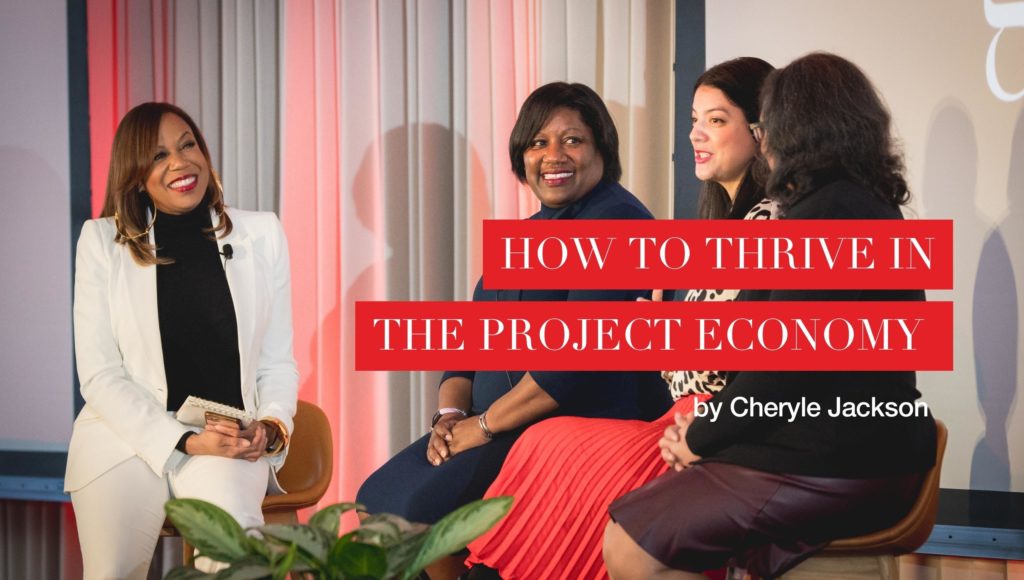How to Thrive in the Project Economy
According to the Harvard Business Review, we’re in a project economy that is estimated to generate $20 million in economic activity and employ 88 million people in project management roles by 2027.
Projects are important to companies. They’re also important to our careers. One of the most powerful ways to shape your career is through the projects you choose. The biggest jumps in my career have come as a result of projects I worked on. But not all projects are created equal.
Women and people of color especially need to beware of glass ceiling and glass cliff projects. Unfortunately, dead-end or problematic projects often get assigned to women and people of color. Here are four glass ceiling and glass cliff projects to watch out for:
Worker bee projects. These are projects that box you into a supporting role and keep you unseen, behind the scenes. Worker bee projects aren’t just a danger when you’re entry level. The worker bee mentality can follow you all the way up the ladder. Of course, everyone has to take on supporting roles from time to time, but if those are the only projects you get to work on, it’s going to be difficult to advance your career.
Controversial projects. By “controversial,” I don’t mean scandalous. I mean projects that are controversial to the organization’s culture. I experienced this firsthand when I was hired to build a company’s government affairs function. The company, however, had a very sales-oriented and transactional culture. Needless to say, I had a difficult time from start to end there because government affairs wasn’t part of the culture.
High risk-low reward projects. These projects often come wrapped in the words, “Here’s your chance to prove yourself.” These high risk-low reward projects are the projects no one else in the company wants to do. There’s a reason for that! How do you recognize a high risk-low reward project? It doesn’t come with the right resources or support system. Look at the “winners” in your organization—are they doing similar projects?
Marginalized work. These are projects in areas that are perceived as not core to the main operations and revenue of the company. For example, in a highly regulated company (think Boeing or a utility company), government affairs is central to operations. In a tech company, innovation and product development are core. Women and people of color tend to be marginalized into areas that are peripheral to an organization’s mission.
So which projects should you be leaning into? Whether you’re an employee or an entrepreneur, ask yourself these questions:
Will it give you the opportunity to convert a talent to a strength? If a project will let you hone a strength until it’s second nature, that may be a good project to take on. Turning your raw talents into second nature strengths frees up your energy to innovate and be creative. It positions you for bigger things.
Is it an opportunity to acquire a new skill? Have you been eyeing a new job or industry that requires a skill you don’t have yet? Look for projects that will let you build skills that you need.
Will it give you the opportunity for high performance? A project that is in alignment with your purpose and strengths and is in an environment that supports you is a project where you can really shine. If one of these comes along, go for it!
Will it put you in proximity with leadership or powerful people? To advance your career, it helps to be seen by the people who can move you ahead. Be on the lookout for projects where you’ll work with—or be seen by—leadership and people in power.
Will it bring you joy? Don’t discount the value of joy. A high risk project may be worth the risk if it’s important to you personally and is one where you’ll shine. That’s walking in your brilliance!
Sometimes a good project comes in disguise. Case in point: nobody thought me going to work for the Chicago Urban League was a good idea. I was the communications director for the governor of the fifth largest state in the country. I could easily have parlayed that high-profile role into a high-paying Fortune 500 job. But I had a vision for what I could accomplish at the Chicago Urban League. I knew I could bring all of my strengths to it. It was a high risk project to take on, but I was able to shine there and it set the stage for other opportunities, like running for the U.S. Senate and moving into global business development.
It may also be the case that the project opportunities you need are not available in your current job. If so, go outside your organization and look for volunteer projects where you can acquire skills and hone your strengths. Projects are the easiest, most accessible way to showcase your leadership potential!
——-



